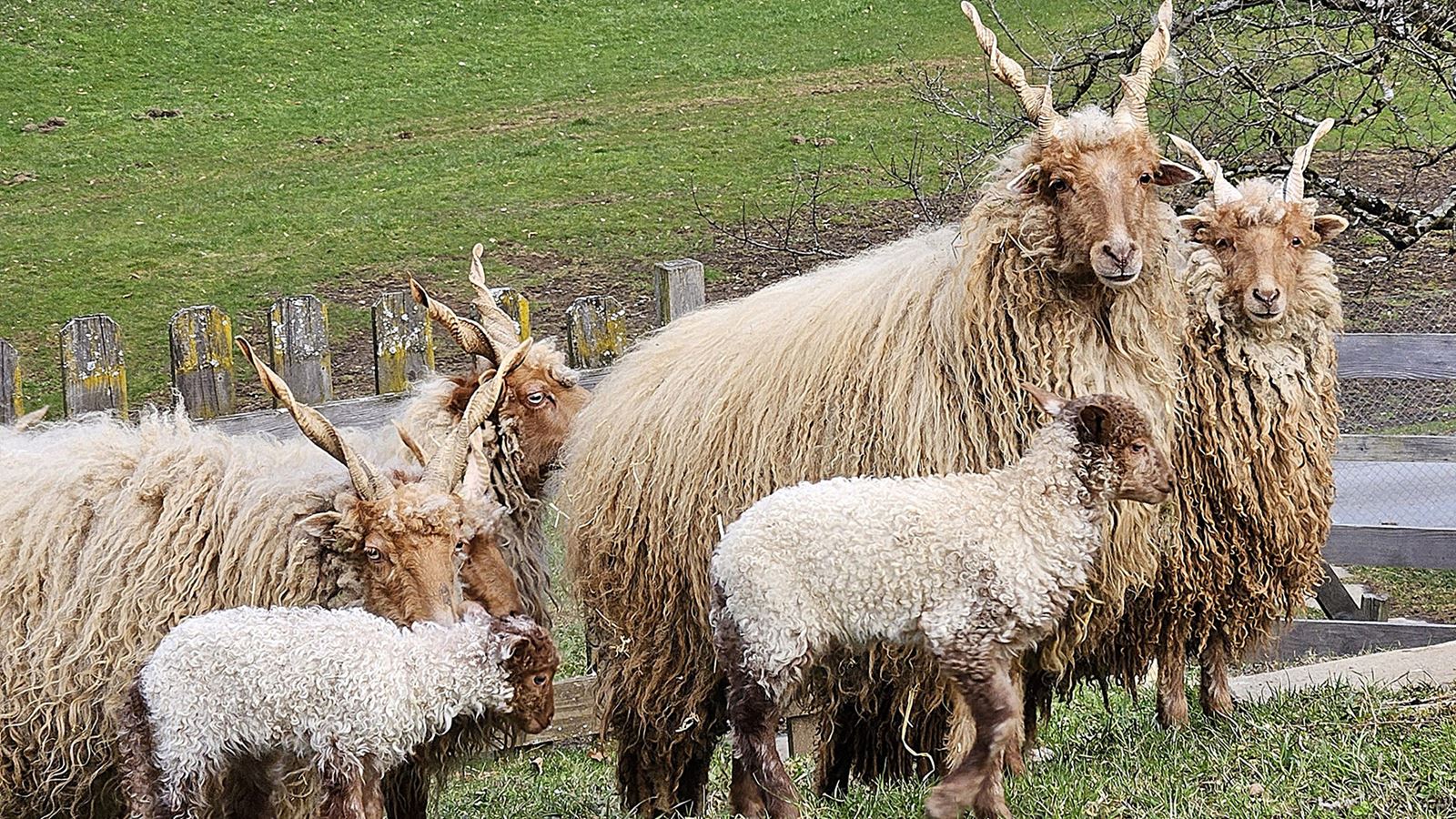News, Background, People
An Easter lamb with a difference
The horns of the Racka sheep look like corkscrews and can grow up to 1 metre long. PostBus driver and amateur breeder Reto Scherrer (36) from Sarganserland is particularly fond of these rugged animals, whose numbers are under threat. Lambs were born just in time for Easter.
Rich Content Section

When you see a Racka sheep for the first time, you feel like you’re in a fantasy film. Their long corkscrew horns are an unusual sight. In Berschis in Sarganserland (SG), they have been part of the local landscape for the past three years. 12 of these shy animals graze on a meadow of over 1 hectare on Reto Scherrer’s property, which he inherited from his grandfather. Reto is a full-time PostBus driver in the Bad Ragaz team, and these hardy sheep are both his hobby and passion: “They’ve grown close to my heart. They help me to wind down after driving.”
This amateur breeder has a penchant for the unusual. He kept alpacas for 10 years, but when he came across a picture of a Racka sheep on the Internet, and read that the breed was endangered, he was hooked. He got in touch with one of the few Swiss breeders and gradually built up his herd. His ram from Austria put in a great performance: this year four lambs were born, including a pair of twins. If Reto has an early or late shift on the Postbus, his partner and mother help him to feed the animals. “I’m glad to be able to help preserve this ancient breed,” says Reto Scherrer happily. Today, there are around ten Racka sheep breeders in Switzerland with guaranteed purebred animals.
The corkscrew horns grow throughout the animals' lifetime. For the ram, they will reach up to 1 metre, and you can already feel them in the youngsters. The passers-by who visit the nearby St. George’s Chapel often stop in amazement. “Racka sheep are peaceful animals that don’t attack you. But you have to watch out when they’re waving their heads”, says Reto knowingly. Reto sells the meat from the sheep weighing 40 to 80 kilos to two restaurants and various individuals. The horns go to a carver and make an appearance at carnival, which pleases the die-hard carnival enthusiast Reto. He’s still looking for a creative solution for processing the wool.
Before the 19th century, the Racka sheep was widespread. After that, new breeds of sheep were bred, producing a lot of fine wool and a higher meat yield. Due to these more productive breeds, the Racka sheep came under pressure and was threatened with extinction at the beginning of the 20th century. It was only thanks to committed sheep farmers who were (and remain) convinced of the particular qualities of Racka sheep that the breed survived. One of these is PostBus driver Reto Scherrer.






